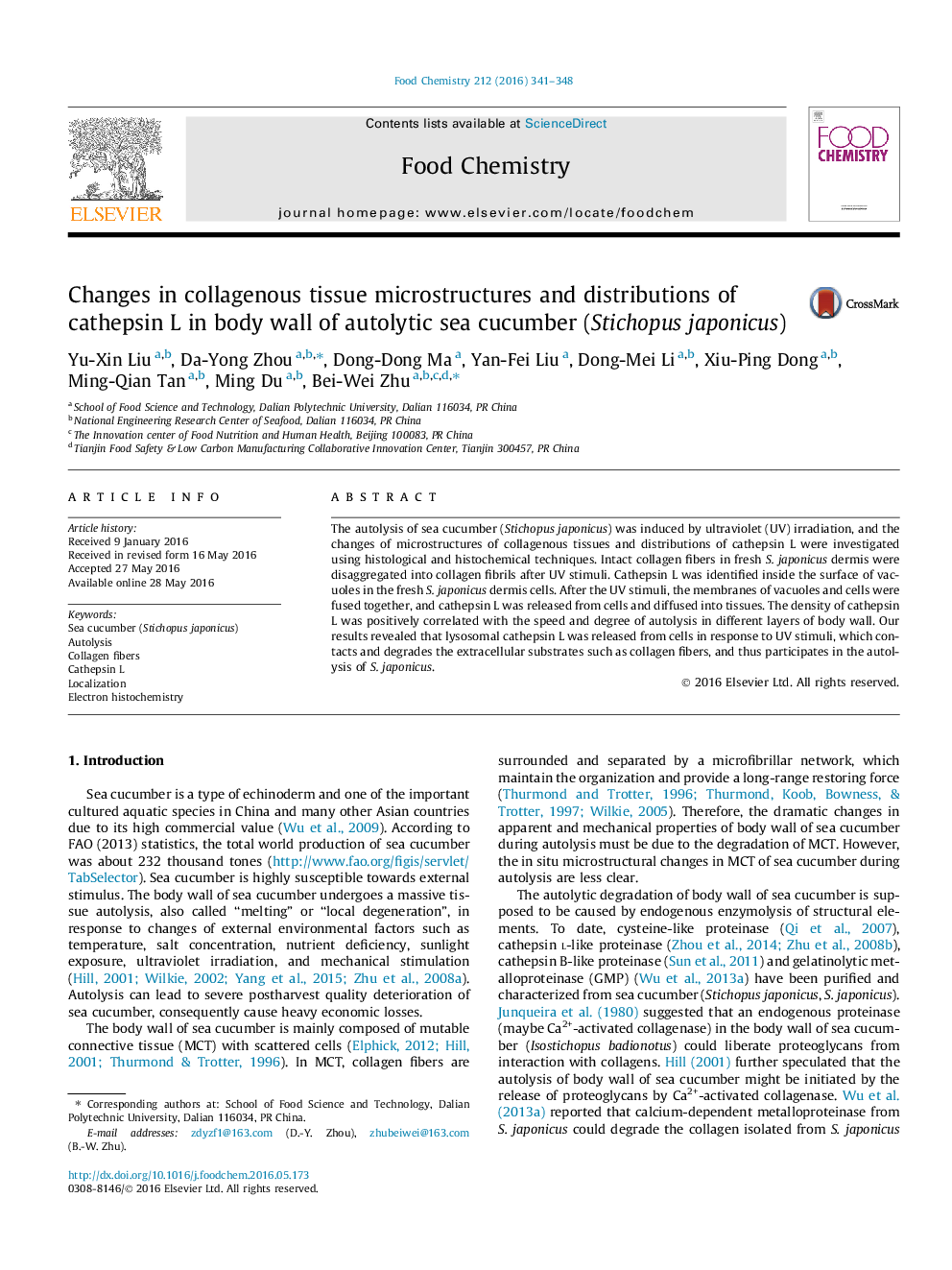| Article ID | Journal | Published Year | Pages | File Type |
|---|---|---|---|---|
| 1185054 | Food Chemistry | 2016 | 8 Pages |
•Cathepsin L was released from cells and diffused in tissues after UV stimulus.•Collagen fibers were disaggregated into collagen fibrils after UV stimulus.•Speed and degree of autolysis correlated positively with the density of cathepsin L.•Speed and degree of autolysis correlated negatively with the density of collagen.
The autolysis of sea cucumber (Stichopus japonicus) was induced by ultraviolet (UV) irradiation, and the changes of microstructures of collagenous tissues and distributions of cathepsin L were investigated using histological and histochemical techniques. Intact collagen fibers in fresh S. japonicus dermis were disaggregated into collagen fibrils after UV stimuli. Cathepsin L was identified inside the surface of vacuoles in the fresh S. japonicus dermis cells. After the UV stimuli, the membranes of vacuoles and cells were fused together, and cathepsin L was released from cells and diffused into tissues. The density of cathepsin L was positively correlated with the speed and degree of autolysis in different layers of body wall. Our results revealed that lysosomal cathepsin L was released from cells in response to UV stimuli, which contacts and degrades the extracellular substrates such as collagen fibers, and thus participates in the autolysis of S. japonicus.
